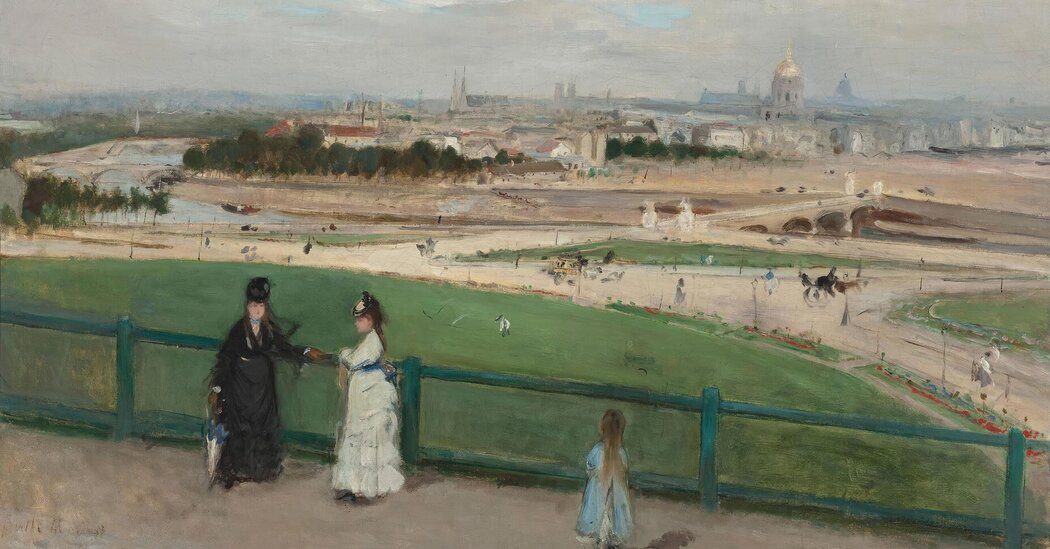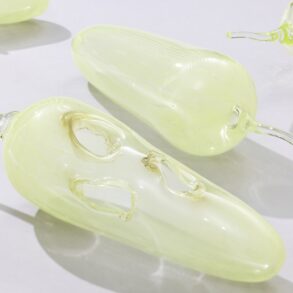
Sebastian Smee’s “Paris in Ruins” follows the lives and careers of Manet, Degas and Berthe Morisot during the Franco-Prussian fiasco.
PARIS IN RUINS: Love, War, and the Birth of Impressionism, by Sebastian Smee
Ever since scandal erupted in 1865 over his painting “Olympia,” depicting a blasé prostitute wearing little more than a black ribbon around her neck, Édouard Manet had grown accustomed to bad reviews. But five years later, he felt that the journalist Edmond Duranty had gone too far. Manet spent the day before their duel looking for, of all things, appropriate shoes. “I can’t tell you what trouble I went to,” he wrote a friend, “to find a pair of really broad roomy shoes in which I would feel quite comfortable.” The clattering fray was aborted when Manet’s sword brushed Duranty’s chest, at which point Manet gallantly made a peace offering to Duranty: his new shoes. They didn’t fit.
An anecdote like this one — and there are many in Sebastian Smee’s deeply researched and suavely written “Paris in Ruins” — gives us an inside view of the painter’s mercurial temperament (thin-skinned and competitive but also charmingly performative) on the eve of what Victor Hugo called “the Terrible Year” of 1870-71. With head-spinning velocity, France picked a ruinous war with Prussia, was humiliated on the battlefield, deposed its emperor (Napoleon’s nephew), had its capital city besieged by German troops and, after an ignominious surrender, spiraled downward into civil war, with the radical Commune fighting a losing battle, the aptly named “Bloody Week,” against the government forces of reaction.
Smee’s gamble in “Paris in Ruins” is to portray what he calls “an affair of the heart,” between Manet and the Impressionist painter Berthe Morisot, against a backdrop of fast-moving social and military history. With so much history to cover, amid flashbacks and fast-forwards, we sometimes lose track of Smee’s artists. A prologue reminiscent of Ian McEwan’s “Enduring Love” follows the perilous balloon ride arranged by the pioneering photographer Nadar to deliver mail beyond the Prussian lines. Smee describes the rampant starvation during the siege, with Parisian workers eating rats while zoo animals — “We are eating the unknown,” remarked Hugo — were served in restaurants. And he vividly describes the summary executions of government forces and Communards alike.
Along the way, we learn how Manet and Morisot responded to the escalating chaos around them, which shook the foundations of their lives and their art. While other painters in Manet’s circle of future Impressionists fled the incessant bloodletting — Camille Pissarro and Claude Monet to England, Paul Cézanne to a hiding place in a village near Marseille — only Manet, Morisot and their close friend Edgar Degas “had the misfortune of being trapped in Paris during its long winter siege.”
As members of the National Guard, the two men took target practice in anticipation of the Prussian advance. Meanwhile, Morisot, from a prominent family with close ties to the government, was resolved to be a painter at all costs. “Work is the sole purpose of my existence,” Morisot wrote as civil war spread to the streets of Paris. Despite the turmoil, Morisot developed what Smee refers to as “a new language of lightness and evanescence” in response to the “precarious, improvised lives” around her. Smee notes that she came to be recognized as “the most groundbreaking female artist of the 19th century.”
A Pulitzer Prize-winning critic currently based at The Washington Post, Smee has a gimlet eye, a seductive style and a novelist’s feel for character and incident. He built his exhilarating 2016 “The Art of Rivalry” around four uneasy artistic friendships — including that of Manet and Degas. In an episode that figures in both books, Manet committed a stunning act of vandalism. Degas had offered to paint a double portrait of Manet and his wife (and former piano teacher), Suzanne. When he presented the completed painting, Manet “took a knife and sliced away half of Suzanne’s face and body.” Smee suspects that Degas got too close to the truth, in portraying a tepid marriage hastily arranged after the older Suzanne became pregnant.
This post was originally published on this site be sure to check out more of their content







